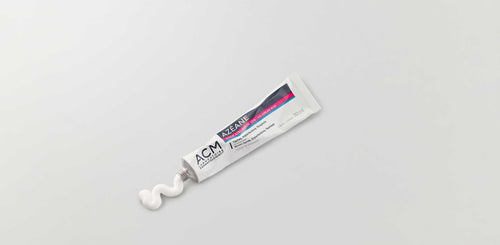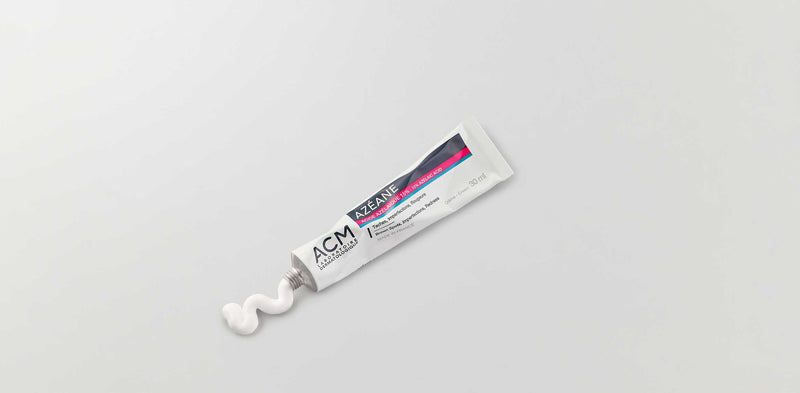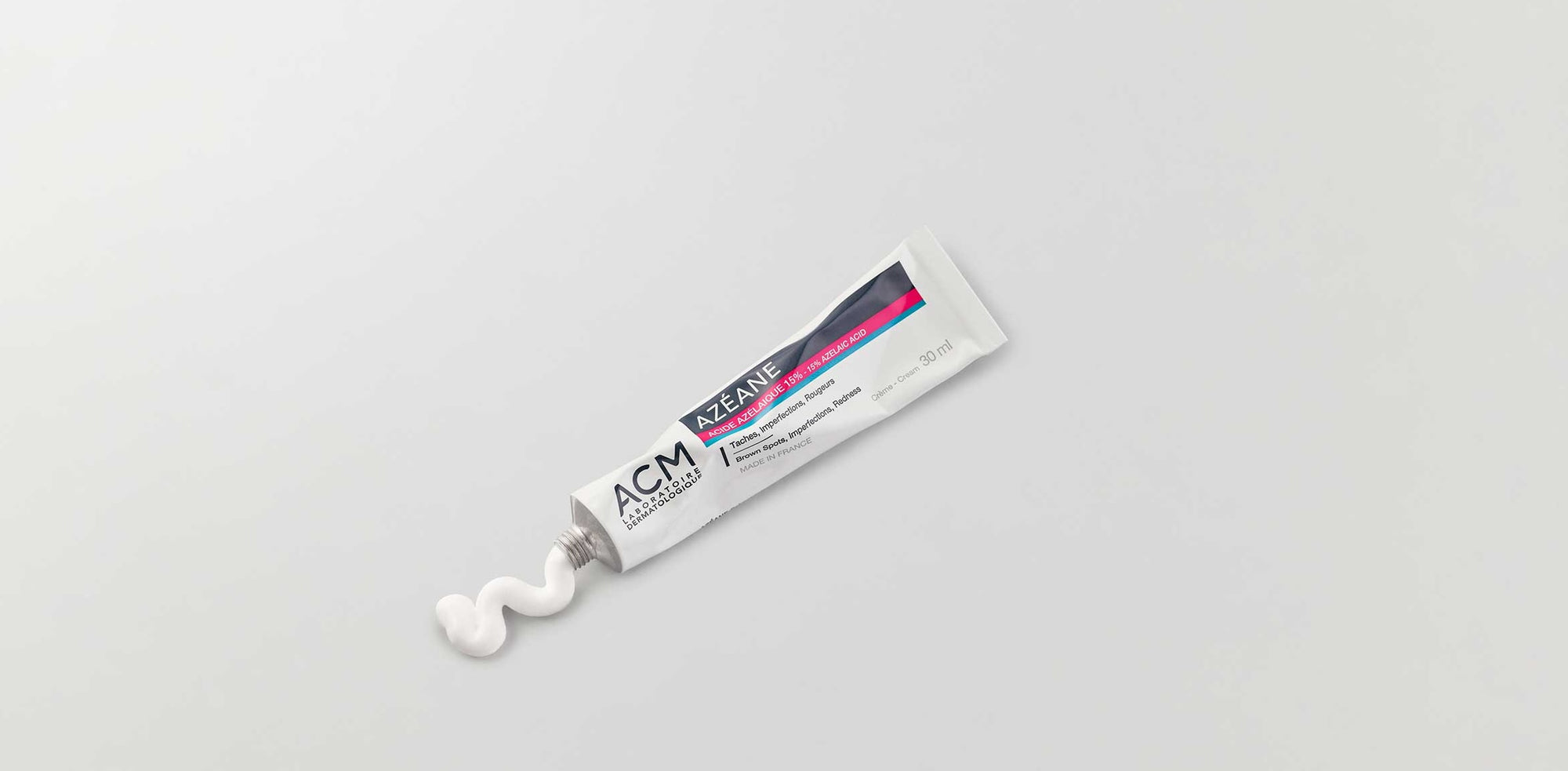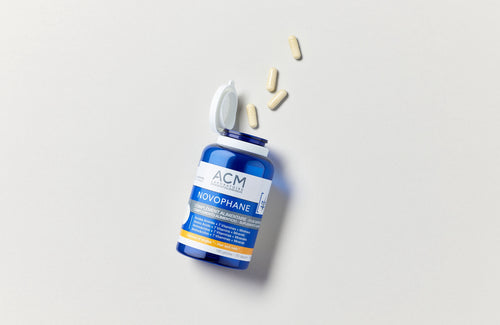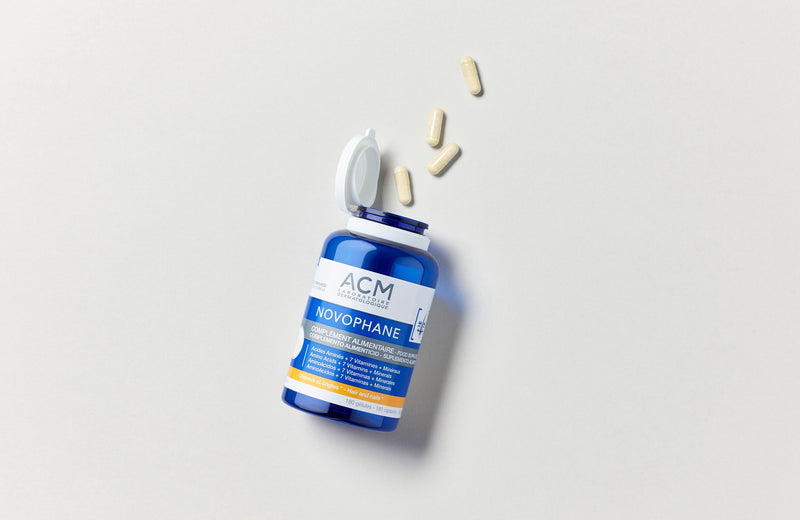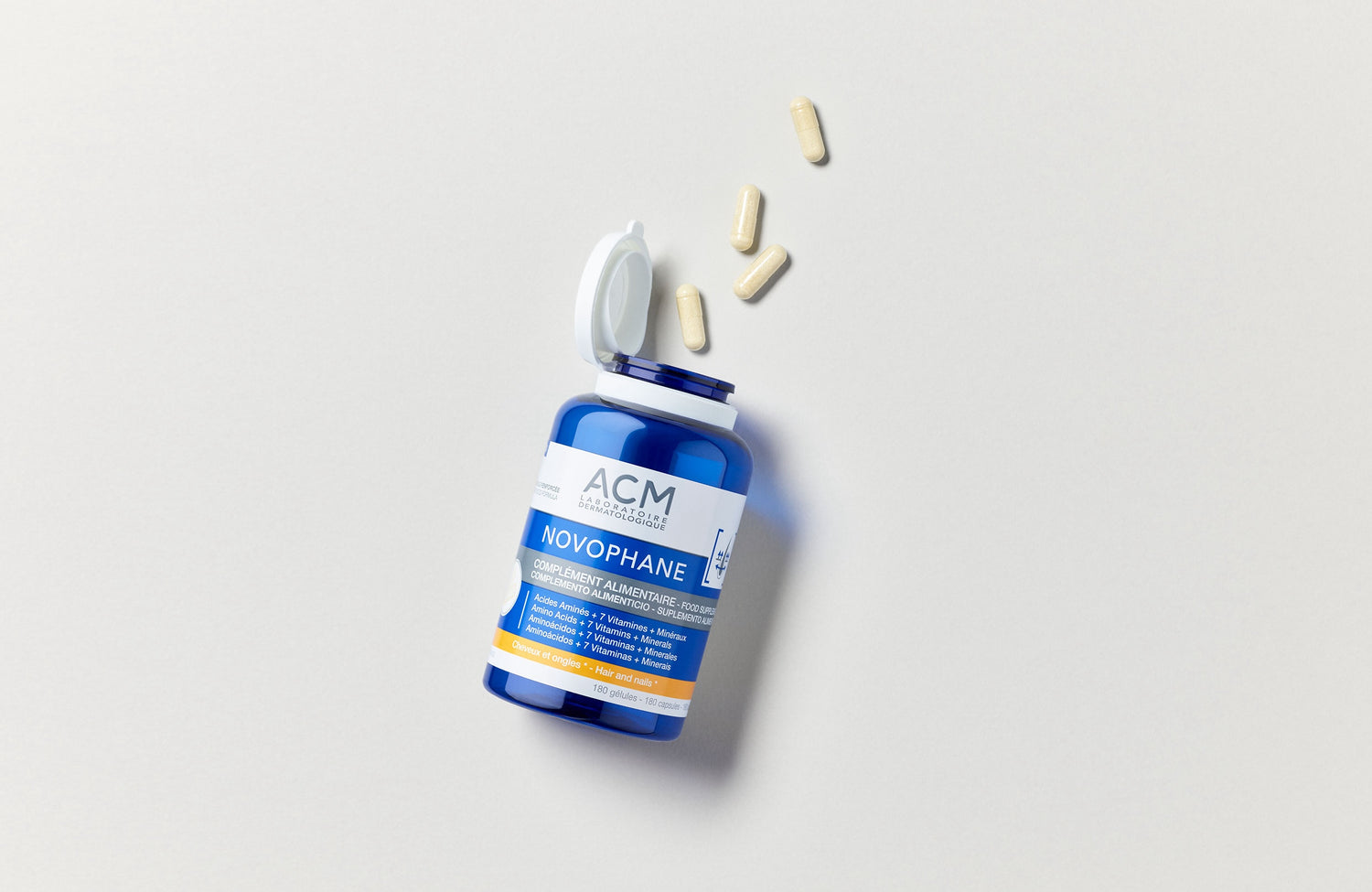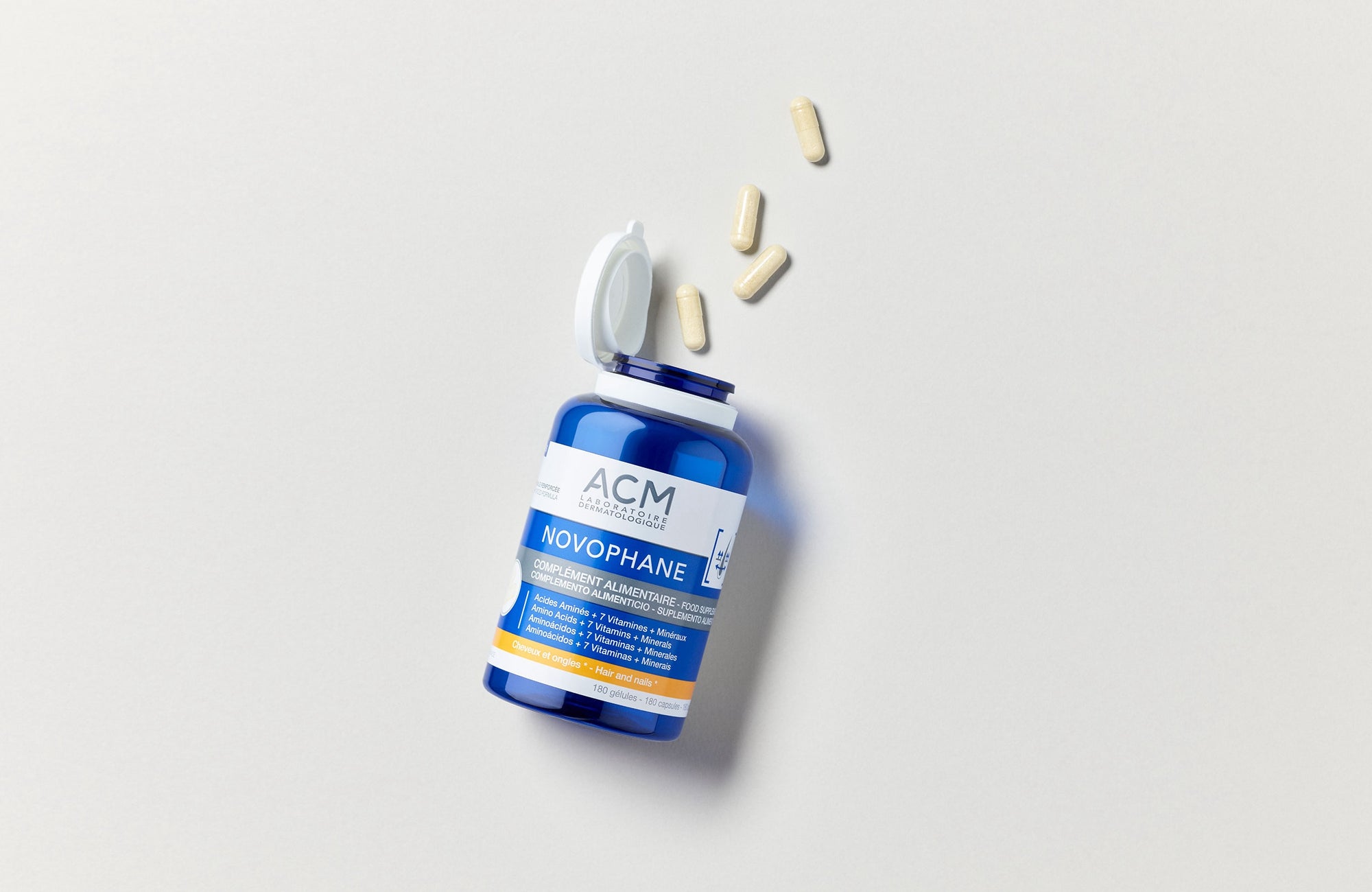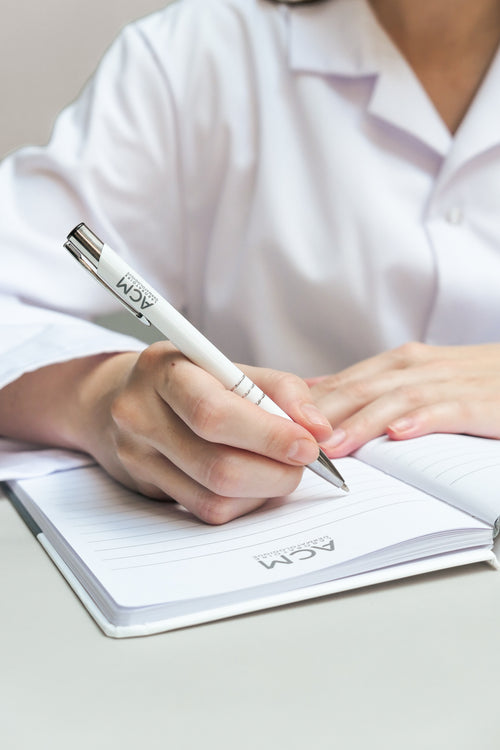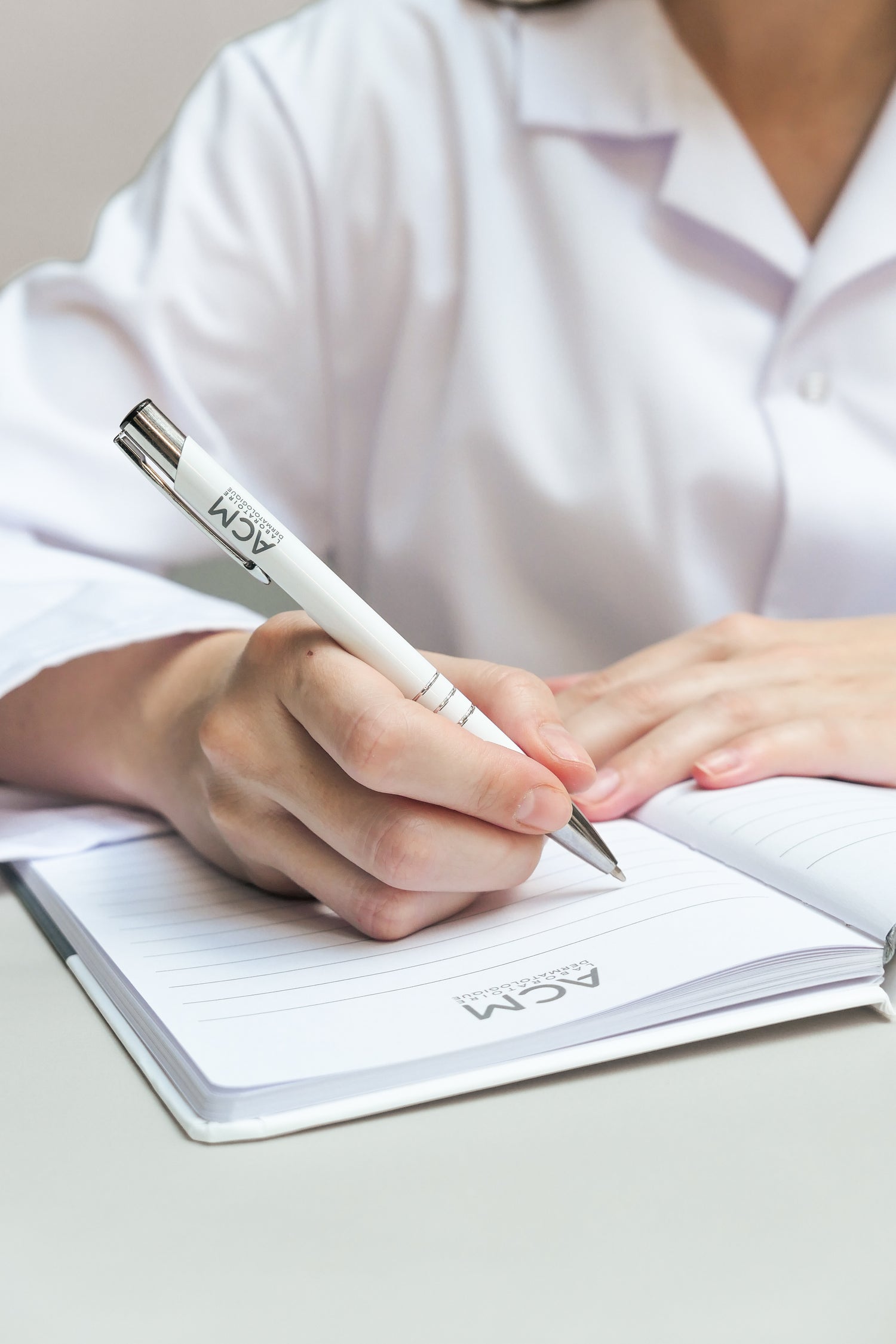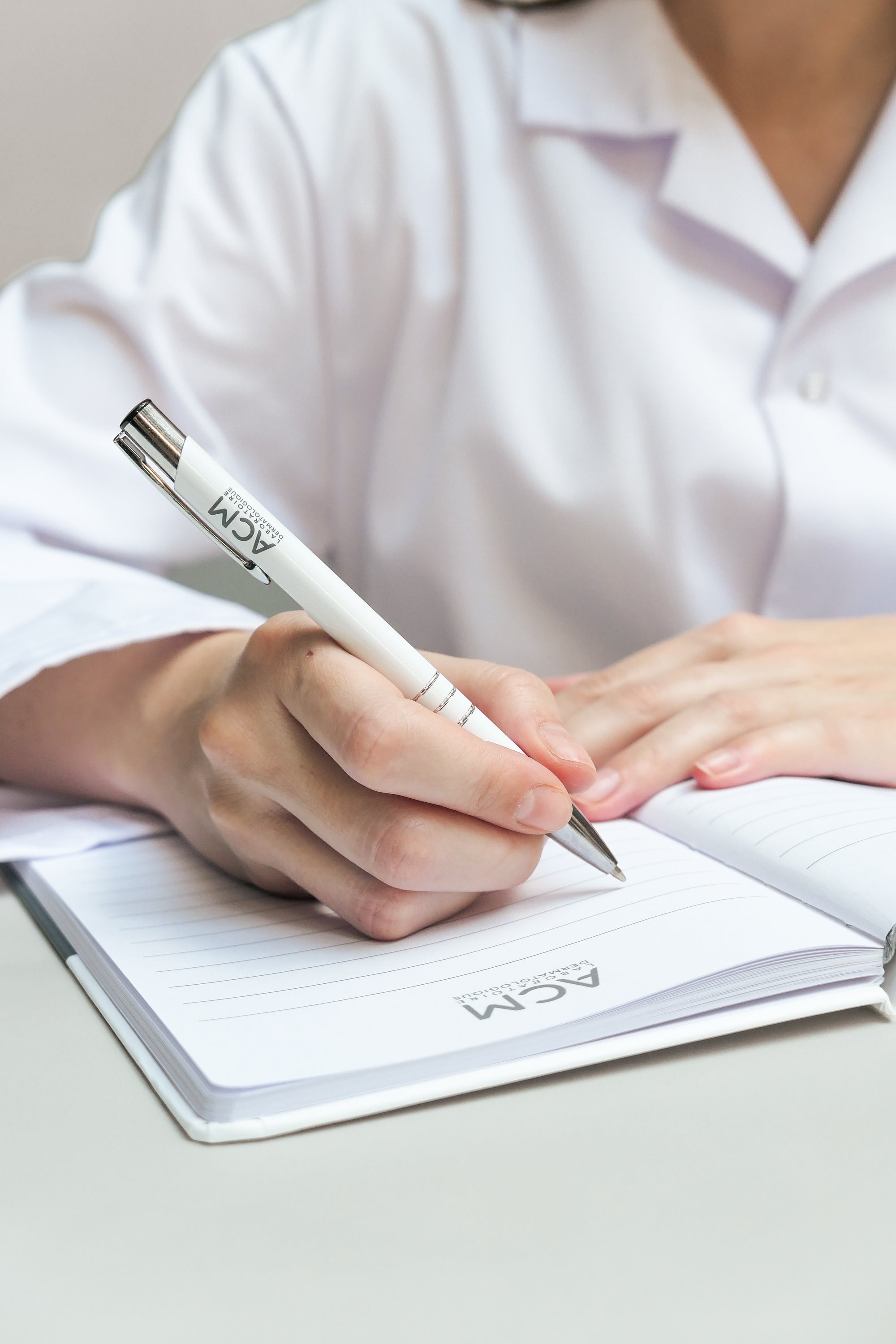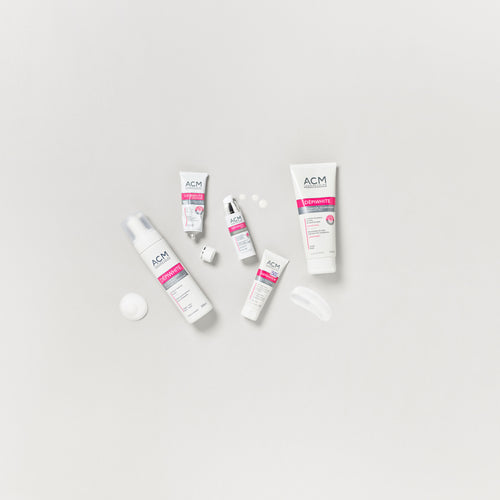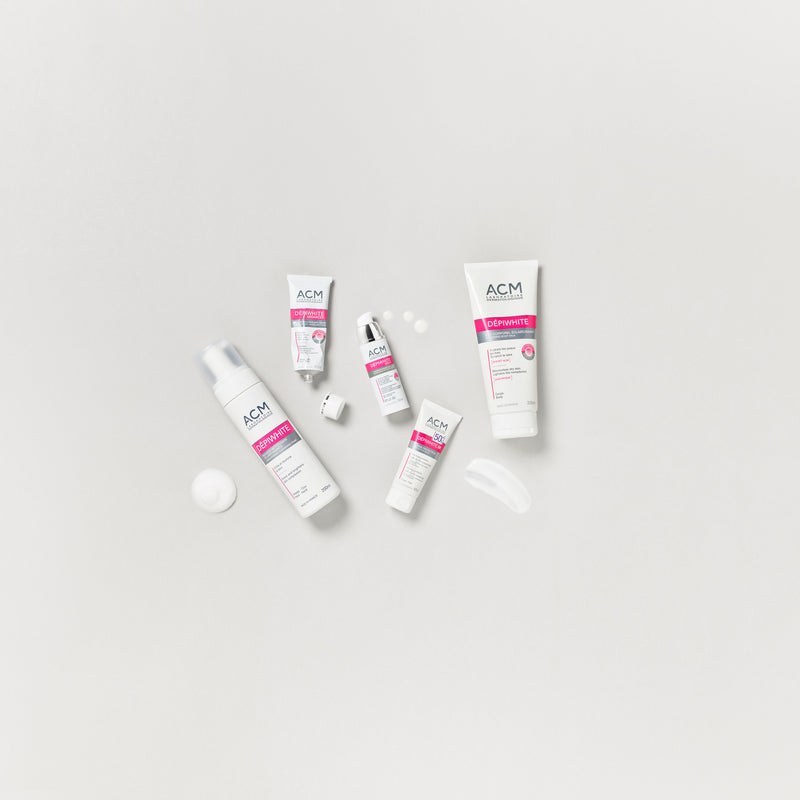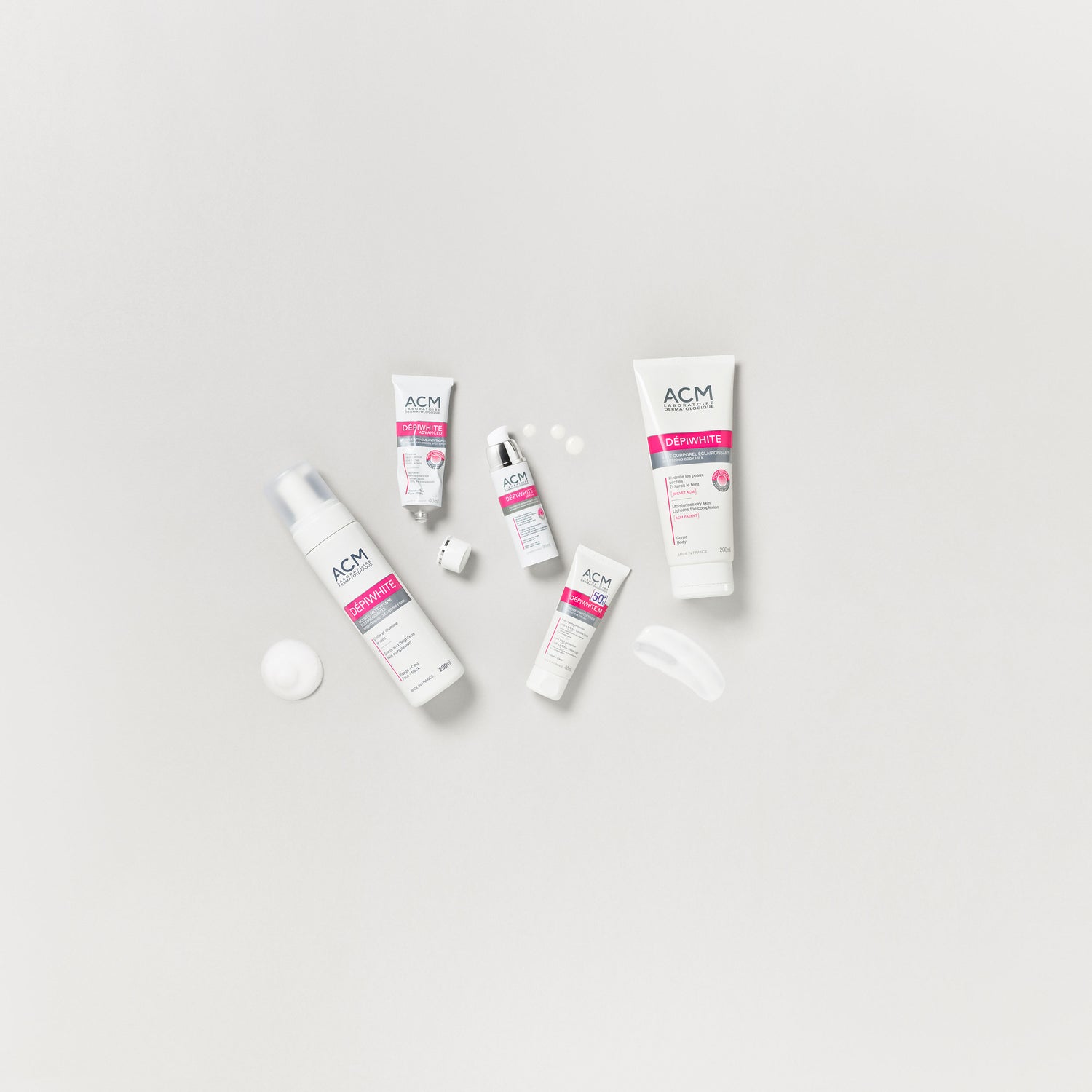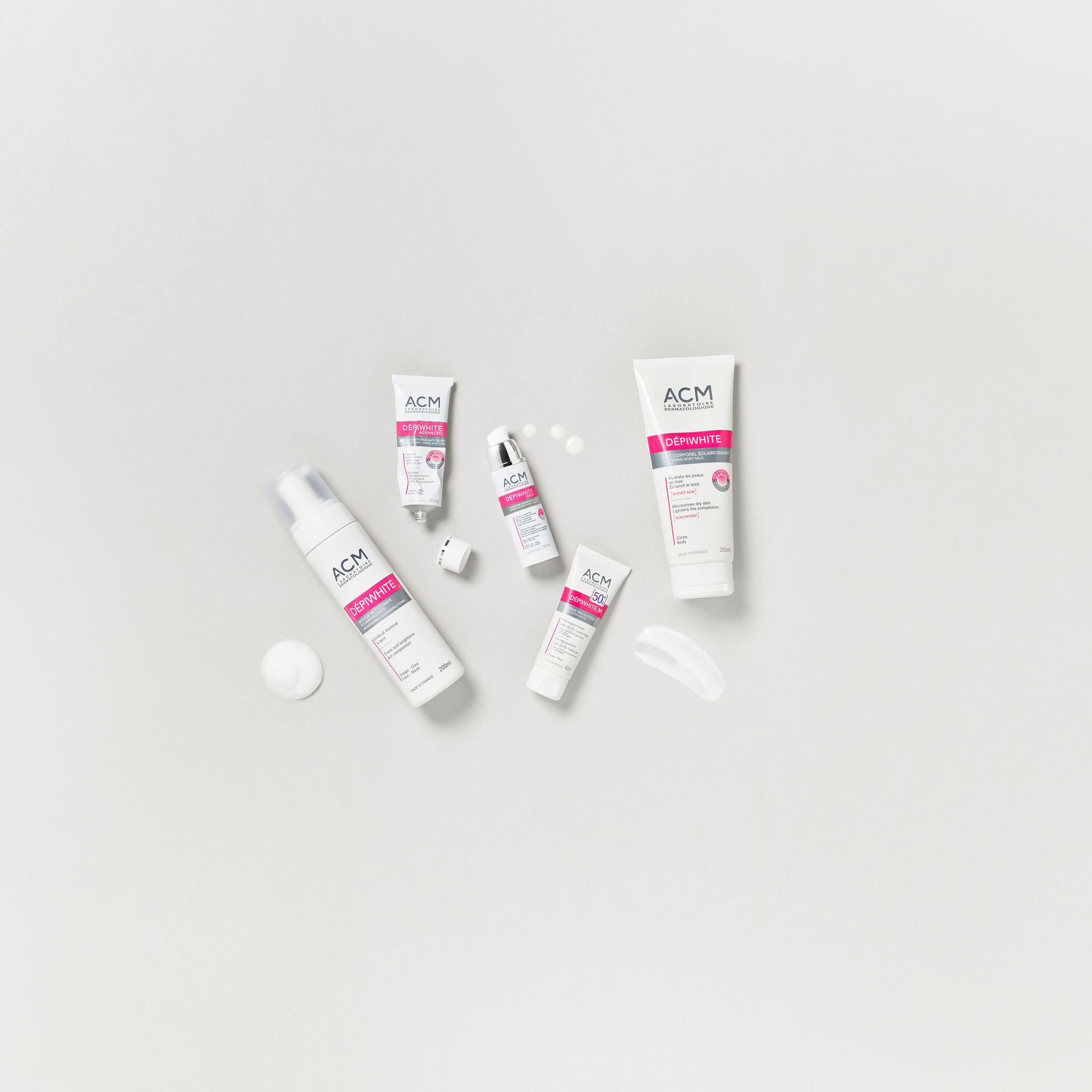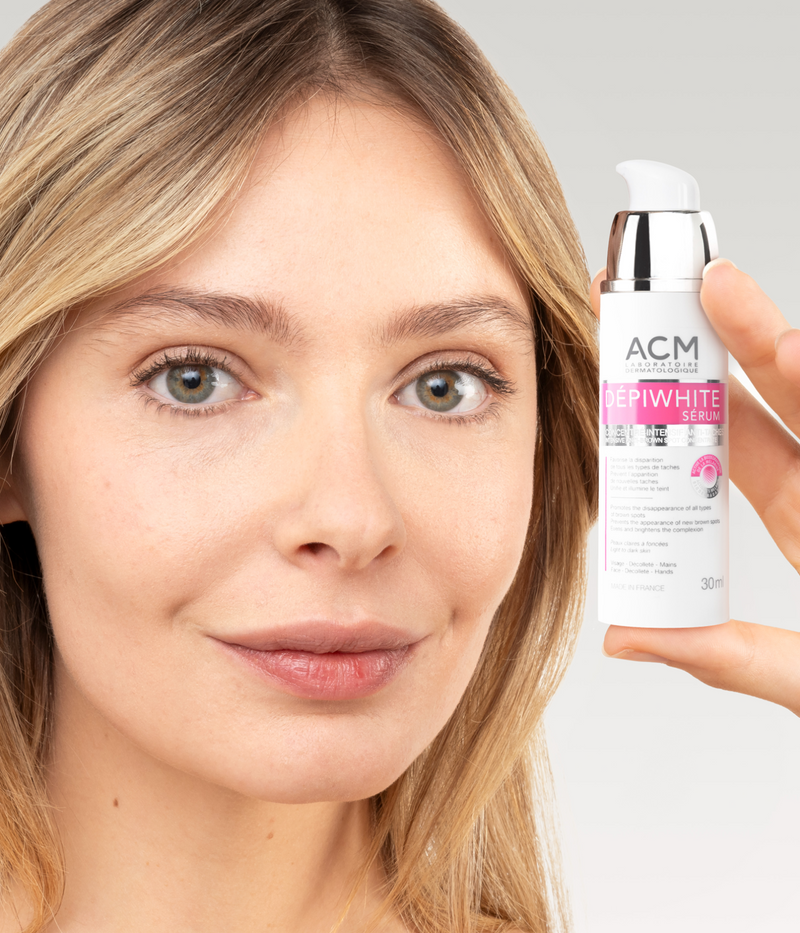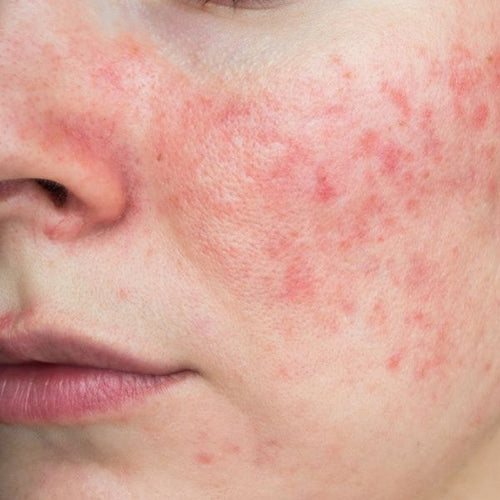
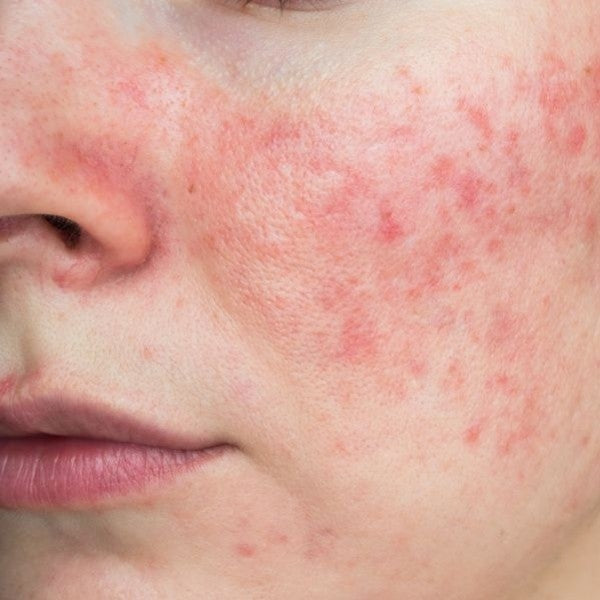
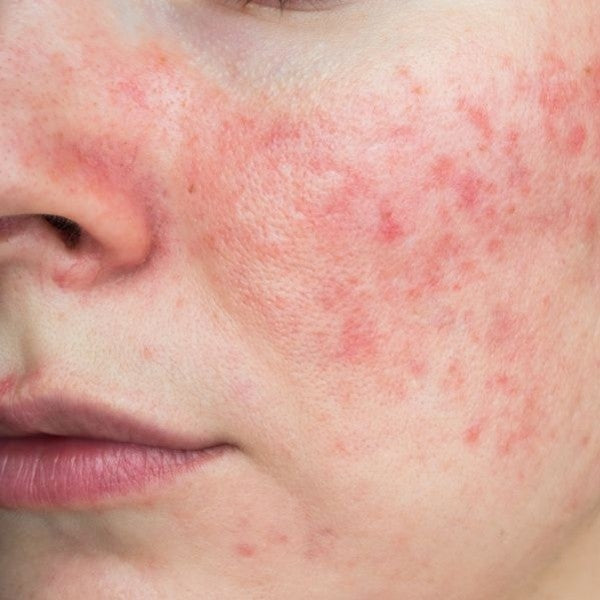





Don't be ashamed of rosacea anymore
Summary
What is rosacea?
Like acne or eczema, rosacea is a real chronic skin disease that should not be neglected at all. It manifests itself through outbreaks of unsightly redness also called flushes or couperose which are of inflammatory origin. Non-contagious, this chronic inflammatory dermatitis is linked to the distillation of blood vessels under the skin. Its symptoms can also be increased dryness of the skin or even inflammations such as papules or pustules and sometimes even affect the eyes. Rosacea generally appears after 25/30 years when the skin barrier is altered. The thin and delicate skin of women is the most affected by these rednesses located on the cheeks, the wings of the nose, the chin or even the forehead. If you suffer from it, you are not alone! In France, the number of people affected is estimated at 4 million.
What causes rosacea?
Although there is no scientific consensus on the origin of rosacea, it could be linked to genetic predispositions, environmental factors, a vascular abnormality in the presence of heat or even the existence of a mite on the skin called Demodex. However, aggravating factors have clearly been identified: stress, blood pressure, alcohol, diet (spicy foods and hot drinks), exposure to UV rays, hard water, temperature changes and certain medications or cosmetics. What are the different types of rosacea and their symptoms? Without treatment, rosacea sets in and can gradually evolve over the years around four successive phases corresponding to specific symptoms; the first two stages of the disease are the most common:
- Stage 1: transient, ephemeral and symmetrical redness triggered by an aggravating factor;

- Stage 2: Rosacea or couperose: diffuse redness becomes permanent, most often on the nose and cheeks. The erythema is then punctuated by small visible dilated vessels which are accompanied by tingling, discomfort and tightness;

- Stage 3: Papulopustular rosacea: inflammatory lesions appear in the middle of the redness: pustules and papules. They spread to the forehead and chin. The skin then becomes dry, reactive and even more sensitive to external elements, including cosmetics;

- Stage 4: Rhinophyma or phymatous rosacea: very rare, this form is recognizable by a red and bumpy tip of the nose due to the dilation of the orifices of the sebaceous glands.
And also: ocular rosacea: the pathology can, in certain cases, affect the eyes, resulting in inflammation of the eyelids and conjunctivitis.
When to consult?
Unfortunately, rosacea does not go away on its own. If it is not treated, it can even get worse and leave permanent lesions. The diagnosis is made by the treating physician or a dermatologist and is based on the appearance of the erythema. The latter examines the face and questions the patient about the symptoms, their duration, and lifestyle habits. The presence of persistent and symmetrical redness of the central part of the face, sensations of heat or burning, small pustules or even eye damage are signs indicating that it is necessary to consult quickly.
How to treat rosacea?
Rosacea treatment helps reduce symptoms, space out flare-ups and better control the progression of the disease. Hence the importance of early diagnosis. Unfortunately, it does not provide a definitive cure, which is why the disease is characterized as chronic. Treatment must be followed correctly to avoid any risk of early relapse. Its effectiveness also relies on hygiene and dietary measures that eliminate the factors that trigger or aggravate rosacea.
Depending on the symptoms (redness, couperose, papules, etc.), rosacea is not treated in the same way. However, taking antibiotics and applying creams reduce, in some cases, the flare-ups of this disease. These are called symptomatic treatments.
- Topical treatments: molecules in the form of gels available on prescription can be prescribed, such as brimonidine at the simple redness stage or metronidazole at the papulopustular stage.
- Oral treatments: 1 to 3 months of treatment with a cyclin family antibiotic or low-dose isotretinoin provide anti-inflammatory action and action against the Demodex bacteria.
- Lasers and IPL: These techniques help reduce symptoms and space out flare-ups. In fact, laser or pulsed light sessions visibly eliminate dilated vessels through heating.
- Hygiene and products adapted to daily life: skin prone to couperose is above all sensitive skin that must be supported daily with a specially formulated routine that will soothe irritation, reduce feelings of inflammation, and deeply nourish and soothe.
Good habits/good practices to adopt when dealing with rosacea / The do's/don'ts of rosacea:
Rosacea is generally not serious; however, it can have a strong psychological impact due to the visibility of the facial lesions. Clearly, good skin health is a condition for well-being and self-confidence, so it is important to adopt a conscientious routine:
• gentle cleansing: morning and evening, rid the skin of all impurities that could aggravate the inflammation; if the water is too hard, use a high-tolerance make-up remover that you apply using a particularly soft cotton pad by lightly dabbing to limit as much as possible any aggression on already sensitized skin. With its high-tolerance formula of 95% natural origin, ACM Rosakalm micellar water purifies and removes make-up from the face and eyes effortlessly and without rinsing. It provides a pleasant sensation of freshness while soothing tightness and irritation.
• a multi-action cosmetic: choose a treatment whose list of ingredients contains only the essentials to ensure maximum tolerance. Day after day, the sensations of heating are reduced, comfort is restored. ACM Rosakalm anti-redness cream reduces, strengthens the venous walls and soothes the sensations of heating and discomfort in order to reduce skin reactivity. It immediately and lastingly restores the comfort of the skin. Redness becomes more discreet and the complexion regains its radiance.
• daily protection: external aggressions such as the sun's rays tend to aggravate the phases of rosacea. As soon as the first rays of sun appear, it is essential to apply daily sun protection dedicated to sensitive and reactive skin, therefore formulated with suitable ingredients; a tinted version also helps to even out the complexion, reducing the appearance of redness. ACM Medisun Tinted Mineral Cream SPF50+ provides very high sun protection and improves skin hydration.
• hygiene and dietary measures: adapt your lifestyle! limit spicy dishes in your diet and hot drinks.
• a water softener: If your tap water is too hard, many filtration systems can be easily clipped onto taps and shower heads to soften the water as much as possible, making it less harsh on fragile skin.




